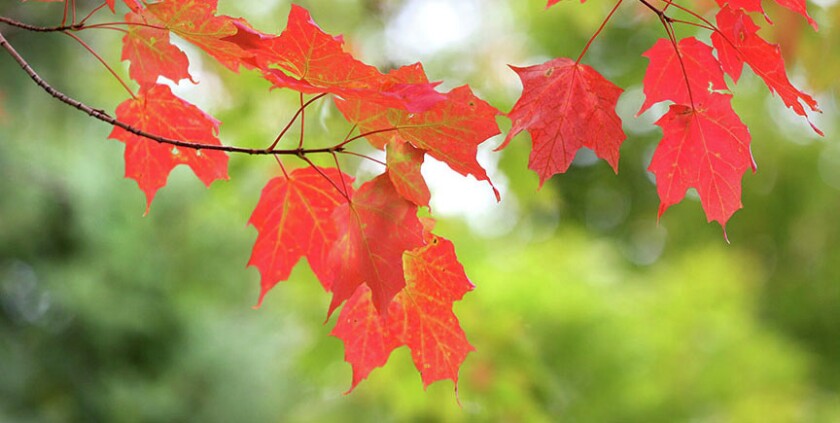DULUTH — Every year about this time, reporters quiz foresters, phrenologists and climatologists about when fall colors will peak and whether they will be vibrant or dull.
And pretty much every year we get the same answer: "It depends."
ADVERTISEMENT
Summer drought, hot days in September, a hard freeze, insects, stress and even last winter's highway road salt all can have an impact on when trees change color and how bright those colors are, according to Brian Schwingle, forest health specialist for the Minnesota Department of Natural Resources, and Kenneth Blumenfeld, senior state climatologist at the DNR, who recently made their predictions for this fall color season.

The upshot? Good fall color can happen in any year under any conditions, including drought years, and weather conditions right now probably have a bigger role. And that's why fall colors can vary across the landscape, from one region to another.
Fall color report highlights
- Daylight is by far the biggest factor in leaf color change, and that’s why the color change happens at nearly the same date every year, within a week or two, as hours of daylight wane.
- Each tree species has different genetics, and genetics also impact when and how trees lose their leaves. Black ash is usually first to turn color in the Northland, followed by maples, aspen, birch, oak and tamarack.
- Fall colors are always in the leaves. They just become visible when daylight gets shorter and chlorophyll production ends and green pigments fade away.
- Weather right now can impact fall colors in more subtle ways than daylight hours. A hard frost can end the fall color fast, same with a big wind or heavy rain. Warm days and cool nights in September, but not a hard freeze, are best for fall colors as they allow development of red pigments.
- Drought can stress some trees leading them to turn color sooner and maybe lose some of their vibrancy or even drop their leaves early. Minnesota is in its third straight year of significant areas of drought across the state, and two out of three years have included severe drought. But that doesn’t seem to be impacting fall color on a landscape-level, Schwingle noted. The exceptions are some trees that are already stressed, such as in urban areas or near roads (the road salt we mentioned) or construction areas which often turn color and drop early. Prolonged lack of water can be the straw that broke the camel's back for some trees already under stress from other issues.
- Minnesota’s growing season is now two to three weeks longer than a century ago due to climate change, that means September is, on average, staying warmer longer. That’s going to generally delay the onset of peak fall colors, although not that much because the amount of daylight isn't changing. And if September heat waves are more common (think Labor Day weekend this year) that will likely make fall colors slightly less vibrant when they do come.
- In the Northland, peak fall colors can begin as early as Sept. 21-28 in the maple forests off the North Shore. But maple trees in Duluth may not peak until the first week in October. Aspen trees also vary over the region, starting earlier to the north and moving south. Oaks near Hinckley, on the other hand, may not turn vibrant until mid-October.

“Brilliant fall color occurs when late summer and early fall days are sunny, nights are chilly and there is adequate rainfall throughout the growing season,” Schwingle said, adding that temperatures in September are a bigger factor than summer drought. Cool is better for color, he said. “When September minimum temperatures are cooler than average, like we had in 2020, fall colors have been earlier.”
To see where colors are popping across Minnesota, go to .
In Wisconsin, go to .
ADVERTISEMENT













